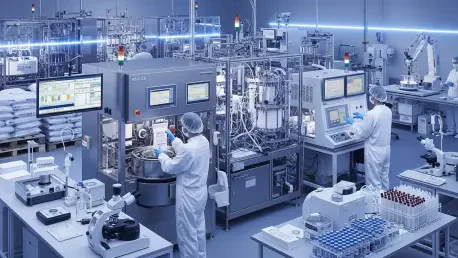As we dive into the world of biopharmaceuticals, I’m thrilled to sit down with Kwame Zaire, a renowned manufacturing expert with a deep focus on production management and innovation in the health industry. With his expertise in electronics, equipment, and predictive maintenance, Kwame offers a unique perspective on the evolving landscape of plasma-derived therapies and vaccine manufacturing. Today, we’ll explore significant investments in the U.S. market, the critical role of plasma in treating rare diseases, and the broader impact on healthcare and the economy. Let’s get started with a conversation that promises to shed light on how these advancements are shaping patient care and industry growth.
How does a massive investment like the $1.5 billion commitment to U.S. manufacturing of plasma-derived therapies reflect the broader goals of the biopharmaceutical industry?
Investments of this scale are a clear signal of the industry’s dedication to meeting growing healthcare demands, especially for specialized treatments like plasma-derived therapies. It’s not just about expanding production; it’s about securing a reliable supply chain for critical medicines that treat rare and serious conditions. This kind of capital expenditure also shows a commitment to innovation and patient care by enhancing capabilities right where the need is most pronounced, which in this case is the U.S., a global hub for plasma sourcing.
What makes the U.S. such a pivotal location for producing plasma-derived therapies, and how does this influence global supply?
The U.S. stands out as the world’s leading source of plasma, which is the cornerstone of these therapies. The country has a robust infrastructure for plasma collection and a regulatory environment that supports high standards of safety and quality. By ramping up production here, companies can ensure a steady supply of these life-saving treatments not just domestically but globally, reducing dependency on international supply chains that can be vulnerable to disruptions.
Can you walk us through the kinds of diseases plasma-derived therapies target and why increasing production capacity is so crucial right now?
Plasma-derived therapies are often the only or most effective treatments for a range of rare and serious conditions, such as immune deficiencies, hemophilia, and certain neurological disorders. The demand for immunoglobulin, a key component, has been rising steadily due to an aging population and better diagnosis of these conditions. Boosting production capacity isn’t just about keeping up with current needs—it’s about anticipating future demand and ensuring no patient goes without treatment.
How do investments like this impact job creation and contribute to the U.S. economy over the long term?
These investments are a major boon for the economy. They create thousands of high-quality jobs, from roles in manufacturing and quality control to research and logistics. Since 2018, the biopharma sector has added over 6,500 jobs in the U.S. alone, and a $1.5 billion injection is likely to push that number even higher. Beyond direct employment, these projects stimulate local economies through partnerships with suppliers and service providers, creating a ripple effect of economic growth.
With over $3 billion already invested in U.S. operations since 2018, what tangible outcomes have emerged from such significant funding?
That level of investment has led to the development of state-of-the-art facilities and expanded production lines, which directly translate to more medicines reaching patients. It has also strengthened the domestic presence of biopharma companies, making the U.S. a powerhouse for innovation in this field. You see new technologies being implemented, improved supply chain resilience, and a deeper integration into the healthcare ecosystem, all of which benefit patients and providers alike.
Could you give us an overview of the different business units within a global biopharma company and how they each play a role in advancing health outcomes?
Certainly. A company in this space might have divisions focused on biotherapeutics for rare diseases, another on influenza vaccines for seasonal and pandemic preparedness, and yet another on specialized treatments like iron-based therapies for chronic conditions. Each unit contributes uniquely to the mission of improving global health—whether it’s through life-saving plasma products, protecting populations from outbreaks, or addressing unmet needs in specific patient groups. Together, they create a comprehensive approach to tackling diverse health challenges.
What is your forecast for the future of plasma-derived therapies and vaccine manufacturing in the U.S. over the next decade?
I’m optimistic about the trajectory. With continued investments and technological advancements, I expect the U.S. to solidify its position as a global leader in this space. We’ll likely see even greater production capacities, more efficient manufacturing processes through automation and predictive maintenance, and an increased focus on personalized therapies. The push for domestic supply chain security will also drive innovation, ensuring that patients have access to cutting-edge treatments no matter the global landscape. It’s an exciting time for the industry, with immense potential to transform lives.









